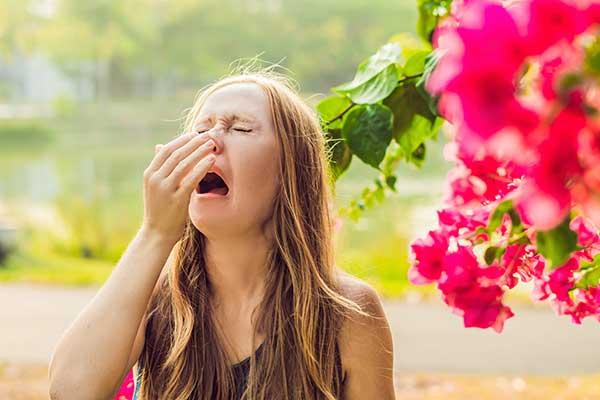How to Beat Seasonal Summer Allergies

How to Beat Seasonal Summer Allergies
Allergies can begin to kick up in the spring as flowers bloom and pollen fills the air, but the worst can hit when spring comes to an end and you still find yourself stuffed up, sniffling and sneezing, and generally miserable.
Summery allergy season keeps going long after Spring has sprung.
Fortunately there are ways to lessen the effects, protect yourself, and identify what kinds of treatment you might need. Knowing is half the battle when you’re dealing with seasonal allergies, so here are a few things you need to know to spend less time sneezing this summer and more time enjoying the sun.
What are Summer Seasonal Allergy Symptoms?
Summer seasonal allergy symptoms are much the same as those that troubled you in Spring:
- Congestion
- Runny Nose
- Watering Eyes
- Sneezing
- Coughing
- Wheezing
- Itchy eyes and nose
- Sore Throat
- Dark circles under the eyes
- Skin rashes
Seasonal Allergies versus Colds
Sometimes it’s possible to confuse these symptoms with having a summer cold, since many traits overlap between the two conditions. You may find yourself trying to get rid of a “cold” that could be more effectively treated as an allergy. Knowing the difference lets you find the right method of relief.
How Cold is Transmitted
A cold is transmitted by a virus, and more specifically through virus droplets shed by an infected person when they sneeze or cough. Colds often carry additional symptoms, such as a sore throat in addition to a runny, stuffy nose.
See also: The Difference Between the Common Cold and the Flu.
More severe colds are accompanied by headaches, fevers and body aches. Colds typically pass within seven to ten days, and if cold symptoms last longer than that, it often means they’ve contributed to a more serious infection like sinusitis, bronchitis or pneumonia.
The easiest way to distinguish between colds and seasonal allergies is noting the symptoms and traits they don’t share. Allergies are more likely to cause sneezing, coughing, and wheezing and much less likely to cause aches, pains, and fevers.
Colds pass within a week to ten days; allergies don’t.
How Summer Seasonal Allergies are Diagnosed
The best way to get seasonal allergies diagnosed is to visit your doctor. They’ll ask about your symptoms and allergic history, and if your allergies are severe, they may refer you to an allergist who specializes in diagnosis and allergy treatment.
The skin test administered by allergists involves exposing a small spot of your skin to a tiny sample of allergen — if you’re allergic, a small bump will form — but your provider may do a blood test instead. Your doctor will refer to these tests when recommending a treatment.
How Seasonal Allergy Treatment Works
A wide variety of over-the-counter solutions for allergies are available: antihistamines, decongestants, eye drops, nasal irrigation, and others. If your allergic symptoms are treatable by an over-the-counter option, your doctor will often recommend one.
If your allergic reactions are sufficiently severe or have the potential to become so, your doctor may prescribe and recommend you carry two doses of epinephrine shot, better known as an epi-pen.
He or she may also recommend a prescription medicine or spray, or may treat you via immunotherapy, which accustoms your body to allergens in tiny doses using tablets, shots, or drops.
Whatever your doctor chooses, you can reinforce those efforts with your own by recognizing where allergens come from and how to keep as many of them out of your home as possible.
Identifying Sources of Seasonal Allergies
Seasonal allergens come from several major sources. Plant pollen is by far the leader, followed by smog, stinging insects, and microscopic things that multiply faster in warm air.
Steps for making allergy season easier depend on knowing these sources and finding practical ways of guarding against them.
- Monitor the pollen count and smog levels in your local news and weather broadcasts, and stay inside when they’re high.
- Install an AC system that lets you keep your home cool without opening doors and windows. Keep those portals closed and run an air purifier.
- Regularly clean places in your home where pollen is likely to collect: bookshelves, vents, and air filters, for example.
- Vacuum often while wearing a mask to help block pollen, mold, and dust stirred up by your vacuum cleaner. Use a bag vacuum with a HEPA filter for ease of disposal with minimum exposure to the allergens.
- Keep your house’s humidity between 30 and 50 percent to avoid thriving populations of dust mites.
- If you suffer an insect sting, follow these tips for treating it.
Staying informed and taking a few precautions can help people with persistent summer seasonal allergy symptoms enjoy the season more fully.




